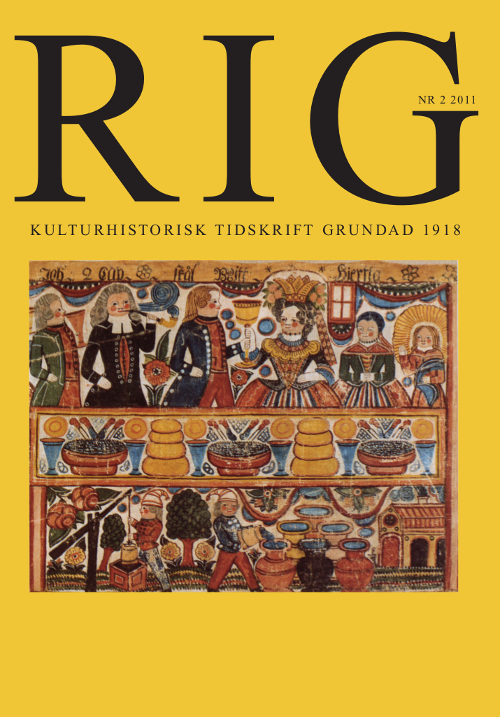”Sex stenkrukor i Kana i Galileen”
Abstract
Stone Jars at the Wedding at Cana
This iconographic close study shows the traditional bondage in the popular tapestry painting, which, however, show regional differences. The study is based on a close scrutiny of a number of known painters’ production of The Wedding at Cana. The biblical story (John 2:1–11) portrays how Jesus turned water in six stone jars into wine. When the southern Swedish tapestry painters reproduced the justification faithful to the biblical text they always painted six pitchers, even if these sometimes only served a decorative function as a balustrade in front of the wedding table (Fig. 1, 3, 6). They have also been stacked on top of each other (Fig. 3).
The painter Anders Pålsson depicts how two servants, lift up the water with a pole wind (Fig. 5), which was customary in western Småland and Halland (Fig. 1). As Amos Comenius shows in the Orbis Sensualium Pictus 1796 (Fig. 11) this technology could be used alongside the water was pulled up with a bucket attached to a rope that ran over a pulley. The latter method, we find in the hanging paintings in eastern Småland and Blekinge (Fig. 7–10, 13). Focusing on the six stone pots and on the technology with which the water was heaved thus provides an important confirmation of how tied to local traditions the peasant painters was. I have previously shown such strong traditions in other details in hanging tapestry (Bringéus 1991). Ultimately it would depend on respect for the biblical tradition.

